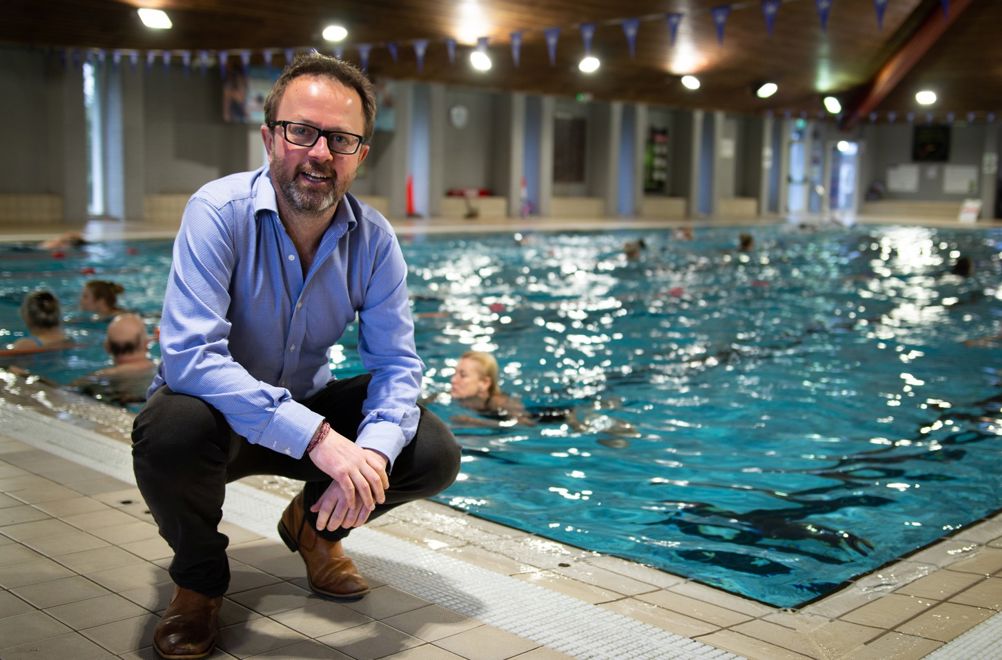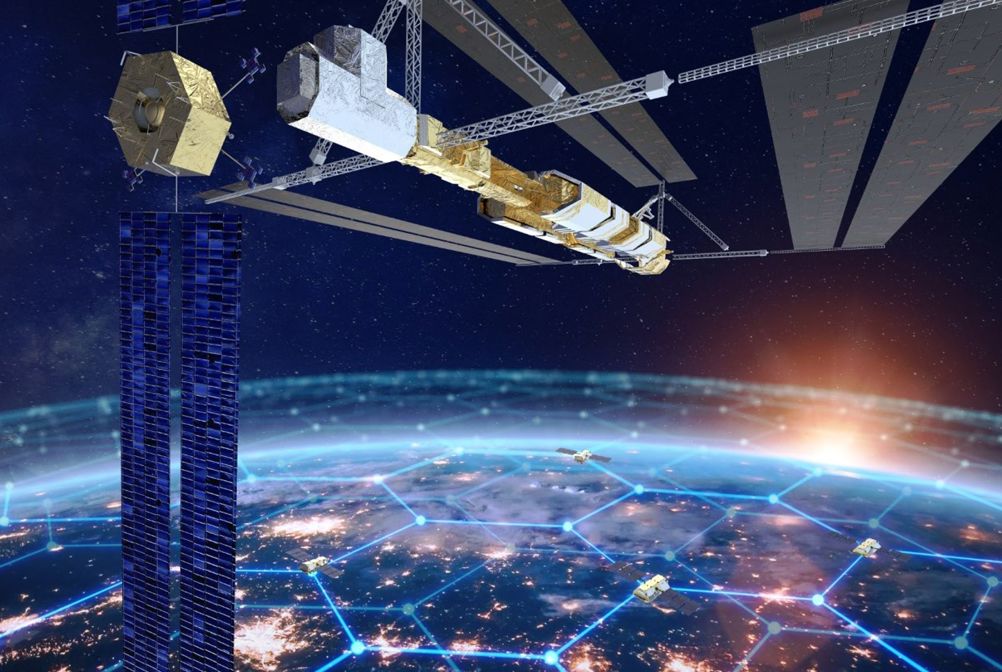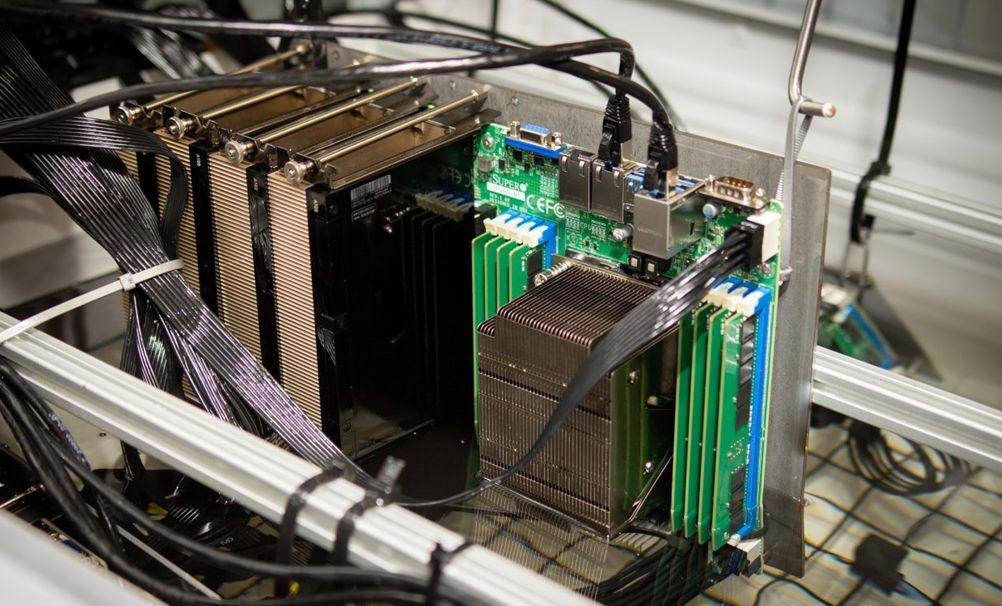Today, data centres are thought to account for around two per cent of global electricity usage, which is more than the total of the UK electricity market. And without a fundamental technological shift, the growing demand for the services they provide is expected to push this figure closer to 15 per cent, making them one of our planet’s biggest consumers of electricity.
In response, innovators and engineers are exploring a range of options that could improve the efficiency of these engines of the digital age – including the prospect of locating them within environments and applications that can reduce the cost of cooling; making practical use of the waste heat generated; and even tapping into new sources of energy.
We spoke to two organisations at the forefront of thinking in this area: Thales Alenia Space, which is exploring the feasibility of using space-based data centres to tap into extraterrestrial solar energy, and clean energy startup Deep Green, which is commercialising technology that enables sites such as swimming pools to provide free cooling in return for free waste heat.
Yves Durand, Director Technology at Thales Alenia Space and expert of the ASCEND feasibility study
Mark Bjonsgaard, CEO - Deep Green
Why is it important to explore the development of more energy efficient data centres?
YD: The number of data centres is growing extremely rapidly, following the rate of our data usage (+30% every year). There is no pause in sight, with new data processing intensive usages such as new AI applications, new digital usages, working methods, etc. The problem is the massive energy consumption associated with data servers: experts project that the energy needed for data centres could even reach 20% of our global energy resources before 2050.
Strict digital sobriety measures are difficult to envision today, considering the need for digital, the billions of objects and vehicles soon to be connected through more performant communications, as 5G or 6G. The data centre industry is making great efforts to reduce its energy consumption, but the only available leverage today is the reduction of the energy spent in cooling (such as immersion in oceans, implementation in northern countries, drawing of cold underground water) and a race for more efficient electronics technology.
As we need to rapidly get rid of fossil fuels to reach carbon neutrality, the pressure on renewable energy production will become very high. If data centres could make use of a completely different energy source, such as extraterrestrial solar energy, it would relieve the effort to provide on ground the renewable energy for essential human needs such as transport, heating, agriculture, manufacturing, etc.
MB: The data centre industry already uses one to three per cent of the UK’s electricity supply and it’s generally assumed that we will need 10 times the amount of data centres in the next 10 years. The sector is just never going to be able to get its hands on around 20% of the country’s electricity supply so there’s an economic argument. Then there’s the sustainability argument, which is that it’s nuts in a climate emergency that we’ve got an industry that takes three per cent of the world’s electricity supply and literally uses billions of gallons of water to inject it into the atmosphere in the form of waste heat.

What’s more, data centres are not going to be able to cope with type of compute that’s coming. As AI takes over [the GPUs used in them] will get really hot and conventional data centres won’t really be able to cope with them because they’ll take so much power and they create so much heat.
The data centre industry is going to be like the fossil fuel industry in the next 10 to 20 years if it doesn’t do something about this.
Outline the solutions you are exploring or developing to address this issue?
YD: The goal of the ASCEND study is to determine whether placing future data centre capacity in orbit, using solar energy outside the earth’s atmosphere, will substantially lower the carbon footprint of digitalization. If the answer is yes, space data centres could become an active contributor to the EC Green Deal objective of carbon neutrality by 2050, which would justify the investment required to develop and install such a large space infrastructure system.
Data centres are an ideal candidate for orbital location because only data is transferred, be it through fiber optics cables on ground, or through optical feeder links in space. The ASCEND study already showed that datacentre stations could be located in orbits permanently illuminated by the sun, minimizing the need for on-board batteries, and compatible with current access delay requirements.

There is today no major technology obstacle to building large infrastructures in space that could house the equipment needed for data centres. The “old” space station ISS is an example of such a large space infrastructure, and the technologies have greatly evolved recently in on-orbit services. The foreseen infrastructure would be unmanned, which would also make it more accessible in terms of cost. It will require in-orbit assembly, inspection, maintenance and repair, which is now possible given the recent advances in robotics and AI based anomaly detection.
A major challenge will be the availability of a heavy, reusable and ‘green’ launcher. The numerous launches would have a carbon and environmental impact, which needs to be quantified, and compared with the carbon emissions associated with the equivalent ground data centres infrastructure. This is a major part of the ASCEND study.
MB: We extract heat from our on-site edge data centres to provide hot water for swimming pools, blocks of flats and a range of other industries. We supply and fit Deep Green digital boilers for free and pay for the energy they use. In return we ask for space for containers and sufficient grid and internet connection.
The business is really predicated on two new types of cooling technologies that are coming in: The direct chip, which is kind of like the heat sinks that you see on gaming computers where they’re cooled by liquid, and immersion - where you literally dump the whole computer in an inert oil, the oil gets hot, a convection current starts and then you flow that around a closed loop into a heat exchanger.
It’s really simple. It’s computers in massage oil, basically. We’ve framed it as “we’re giving away free heat, aren’t we magnanimous” but actually - of course - we’re being provided with free cooling. It’s genuine symbiosis.
What’s the current status of your work in this area?
YD: The study is funded by the European Commission. It started in January 2023 and is currently at midterm, with a final review foreseen in April 2024. The System Requirement Review and Baseline Architecture kick off gave the basis for detailed analysis to be performed during the following months, and to assess the feasibility of such project and the associated requested new development or technology gap to be crossed.
There is today no major technology obstacle to building large infrastructures in space that could house the equipment needed for data centres
The ASCEND study involves 11 partners from different domains and with complementary expertise. The consortium brings together major players in the fields of environment analysis (Carbone 4, Vito), data centres architecture, hardware and software (Orange, CloudFerro, HPE), space systems development (Thales Alenia Space, Airbus, DLR), and access to space (ArianeGroup).
MB: At Exmouth Swimming pool [where Deep Green data servers are being used to heat the water] we’re currently doing about 20 to 30% of the load of the pool and by Christmas we’ll be saving them about £22,000 and doing about 60% of the load of the pool. As well as that we’re involved in the Barking Riverside district heating project, where heat from a data centre will be used to prime the largest water source heat pump in Europe. That’s going to be one of our first of many, district heating sites.

30% of all industrial applications can house a data furnace. We estimate there’s a £3.4 trillion retrofit opportunity across Europe [in applications including district heating systems, swimming pools, distilleries, laundries, bakeries, and food production]. We’ve already had something like 5000 sites come in and make contact with us since March.
What are the longer-term ambitions for your work in this area?
MB: We see ourselves as the next version of AWS (Amazon Web Servives). If we were sitting here 30 years ago designing what the data centre industry would be we would say, well, we’ll just break it all up and put it where the heat’s needed and we wouldn’t even debate it.
When you think that anywhere that needs hot water could house a little bit of a data centre you start to realise that actually you can start to change the whole structure of society by giving away free energy. It gets quite existential and a bit exciting.
The data centre industry is going to be like the fossil fuel industry in the next 10 to 20 years if it doesn’t do something about this.
It’s not just going to be us doing it like this. In the same way as Tesla opened up their IP and said “everyone use it” because they genuinely just wanted to get everyone else making electric cars, we’re in that phase where it’s like really the more the merrier.
14 to 15 per cent of the UK’s energy mix is heating homes and offices and so when you do the math, actually what happens is that you see in the next 20 years we’ll just distribute data centres around our towns and cities and then we’ll heat all our homes for free. That’s the upside of this. The story actually ends happily ever after.
Given our exponentially growing demand for data will it ever be possible to reduce the sector’s energy demands whilst delivering improved performance?
YD: Current data centres consume energy during their overall operational life, and the tendency is toward the increase of such consumption, with more and more power demanding applications, made possible by improved performance. Moore’s law seems to have reached some limit, and further increase of performance will require even more power consumption.

Data centre consumption can be reduced either through digital sobriety, new very low power processing technology, or the removal of some data centres capacity from the power grid.
The ASCEND project is assessing this last option.
MB: No, but that’s brilliant news because the more compute we need, the more free heat we can generate for society. The whole data centre industry can just explode into the gap which is home and industrial heating, and it can be there as a brilliant welcomed partner. The net effect of this is actually we think our local towns and cities will be regenerated with this idea of free heat.
The Romans, they had their baths, and even if you were pretty much the poorest person in Rome you could still go to the bath. That sort of psychology of us aggregating around free or very cheap heat will, we think, actually reinvigorate our societies.











Radio wave weapon knocks out drone swarms
Probably. A radio-controlled drone cannot be completely shielded to RF, else you´d lose the ability to control it. The fibre optical cable removes...